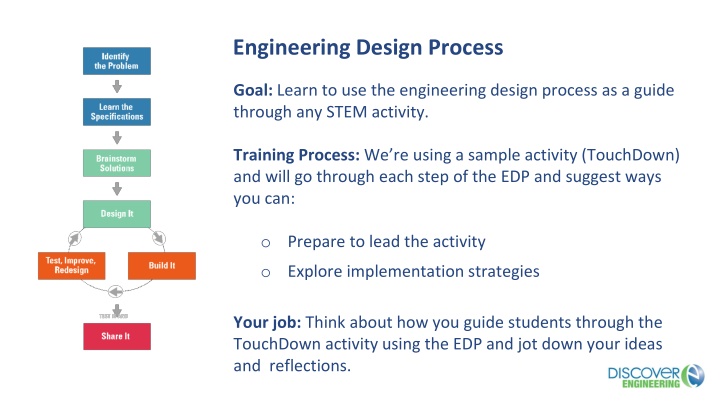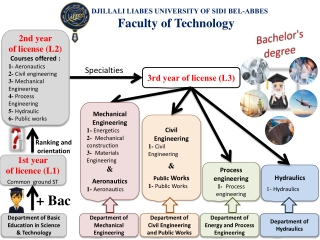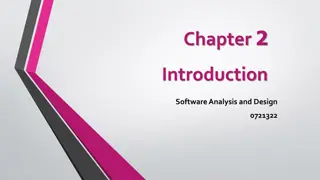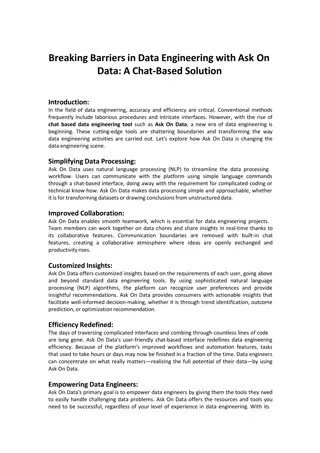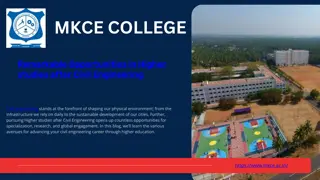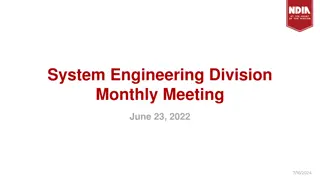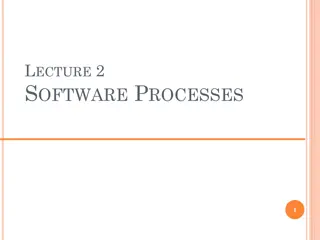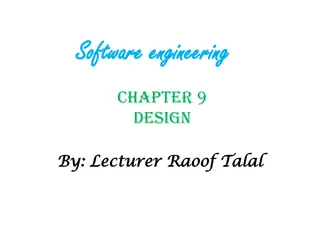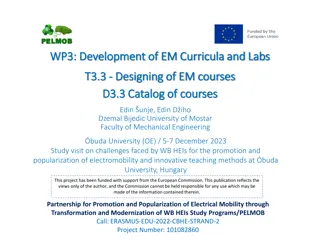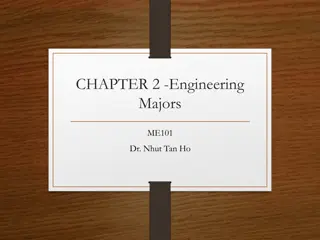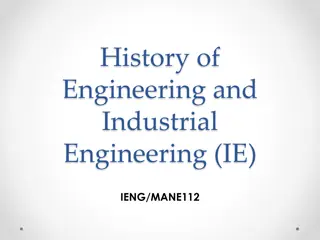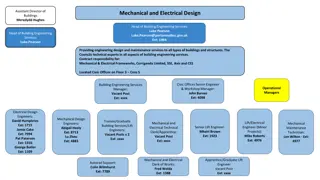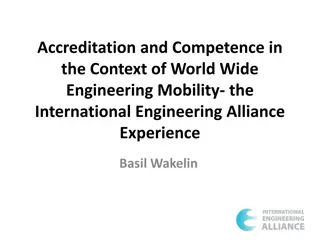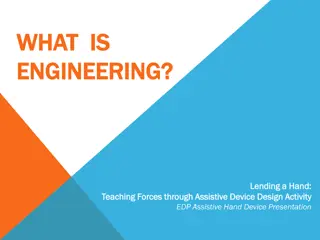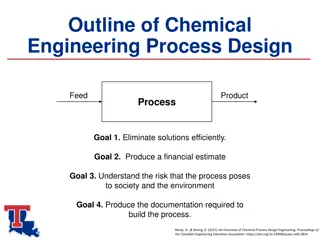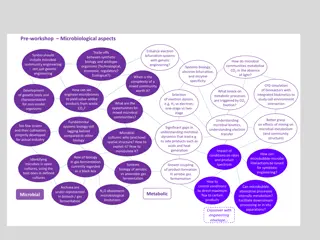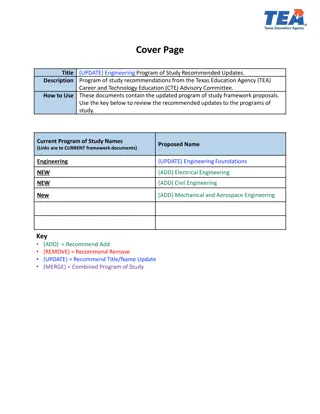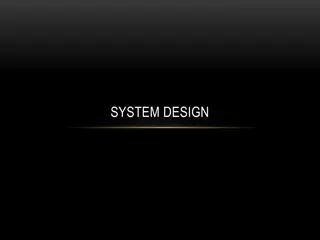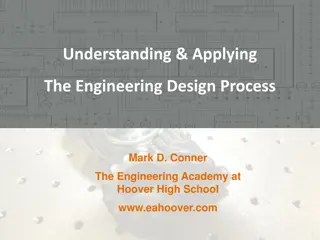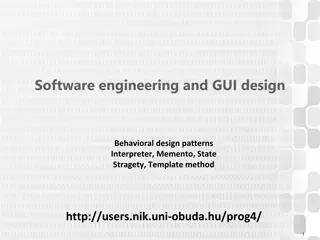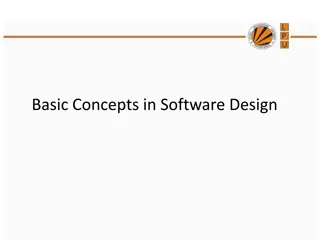Engineering Design Process
Explore how to lead students through the TouchDown activity by utilizing the Engineering Design Process (EDP). Prepare for the activity, brainstorm solutions, build shock-absorbers, test and redesign, and encourage learning through hands-on experience.
Download Presentation

Please find below an Image/Link to download the presentation.
The content on the website is provided AS IS for your information and personal use only. It may not be sold, licensed, or shared on other websites without obtaining consent from the author.If you encounter any issues during the download, it is possible that the publisher has removed the file from their server.
You are allowed to download the files provided on this website for personal or commercial use, subject to the condition that they are used lawfully. All files are the property of their respective owners.
The content on the website is provided AS IS for your information and personal use only. It may not be sold, licensed, or shared on other websites without obtaining consent from the author.
E N D
Presentation Transcript
Engineering Design Process Goal: Learn to use the engineering design process as a guide through any STEM activity. Training Process: We re using a sample activity (TouchDown) and will go through each step of the EDP and suggest ways you can: o Prepare to lead the activity o Explore implementation strategies Your job: Think about how you guide students through the TouchDown activity using the EDP and jot down your ideas and reflections.
Review Sample Activity: Touchdown The Challenge Design and build a system that will protect two astronauts when they land. The Specs The lander should not tip over on impact and astronauts can not be trapped . Materials 4x5 cardboard or stiff paper Small paper/plastic cup 3 index cards 2 regular marshmallows (aka the astronauts) 10 mini marshmallows 3 rubber bands 8 straws Tape
Review Sample Activity: Touchdown Brainstorm How can you help it land upright? What materials will help cushion the landing? Build Build shock-absorbers that will protect the astronauts upon impact. Test & Redesign Use it repeatedly. What changes can you make? What can you learn from others?
Step 1: Identify the Problem Getting Ready: BEFORE you meet with students: Do the activity! This helps you anticipate where kids might need assistance, and you ll be prepared to respond to questions that come up. Identify the activity s learning goal. What connections to real-world engineering can you make? Does this activity offer an opportunity to share the engineering messages of making a difference, creativity, or teamwork? How might you introduce the activity?
Step 1: Identify the Problem Examples from Touchdown How would you introduce TouchDown? What problem(s) needs to be solved to make a successful lander? Examples: How will their lander absorb the energy of impact? How will they make sure their lander doesn t tip over? How will they make sure the astronauts don t fall out in mid-flight without trapping their astronauts. Engineering Messages: Who benefits from building a successful lander? Where might they need to think creatively? Example: Tell kids why a space craft that can land gently is important for getting astronauts to and from the moon safely.
Step 2: Learn the Specs Getting Ready: BEFORE you meet with students: Identify and decide if you want to adapt any of the requirements, constraints, and/or materials. Decide how you ll test their designs and what makes a successful lander. How can you ensure that the students understand the challenge? Example: Ask them to describe the challenge in their own words. Provide multiple activity instructions formats (written, video instructions, etc) Think about extension ideas for the activity as teams will work through the challenge at different speeds.
Step 2: Learn the Specs Examples from Touchdown Introduce the available materials and the testing criteria. Example: When testing landers will be dropped 1 foot from the surface. Ask the students to think about how the materials can be used to solve the problem of absorbing the impact and keep the lander from tipping over. Example: How do springs absorb energy? Do they have any materials they can use to make a spring? How might an index card help?
Step 3: Brainstorm Getting Ready: BEFORE you meet with students: Lots of kids (and adults) like to skip this stage. Think about how can you encourage a high-energy, free-flow of ideas? What strategies can you try if kids argue or criticize each other? How can you get everyone to participate?
Step 3: BRAINSTORM Examples from Touchdown Ask what are some different ways to design the lander. Encourage them to write down all ideas, no matter how wild. The more ideas, the better. Be creative and spontaneous. There are no wrong answers and lots of possible solutions Work as a team and respect every idea. Criticism is not allowed. Everyone should participate.
Step 4: DESIGN Getting Ready: BEFORE you meet with students: How can you help kids narrow down their ideas and choose one to try and to build? Consider how much time the students have to complete the challenge? How might this affect the design and build stage? How can you help kids understand the value of designing before they build?
Step 4: DESIGN Getting Ready: BEFORE you meet with students: Consider how or if you want to the students to use sketches in the design stage. They are a great tool to help them: Refine their ideas Work out proportions or measurements Decide how materials will be used Make sure their ideas can be turned into a realistic plan.
Step 4: DESIGN Examples from Touchdown Before they build, they might want to test out individual pieces of their design. Example: Are there a few different shock absorber designs they are considering? Or have do they have some different ideas about the cabin design for their astronauts and how they secure them with out trapping them? This is a great time to share that the EDP does not necessarily move in a straight line through all of the steps. As above, they may do tests of different pieces of their design, before moving into the full build phase.
Steps 5 & 6: Build and Test & Test Getting Ready: BEFORE you meet with students: If you haven t already, decide how you will test the students designs. Do you want a central testing zone, or will students test at their desks or tables? This is also a good time to think through extension ideas for the kids who finish early. Don t let them stop. What improvements can they make? What questions can you ask to guide students thinking? Resist the urge to tell kids what to do. Great questions to have at the ready are: o Why do you think this is happening? o Is it behaving like you thought? o What changes do you want to try?
Steps 5 & 6: Build and Test & Test Examples from TouchDown Be prepared -- it s loud, it s messy, it s fun, it s educational Ask kids to look for what s working, what s not working, and what could be improved. Example: Encourage kids to look at other teams landers. Does that spark any ideas? Extension TouchDown examples: o Increase the drop length from 1 foot to 2 feet o Have them redesign but remove a critical building material o Challenge them to try a completely new design
Step 7: Share Results Getting Ready: BEFORE you meet with students: This step often gets skipped due to time. Kids are having so much fun it s hard to stop them. But this is an important time to ask kids: What worked? Did they have any unexpected outcomes or results? Ask kids to talk about their designs and their favorite features. Review the goal of the activity, and how someone could benefit from what they ve made. Is there another team s design they admired or borrowed from? Have kids talk about how they used the design process.
Step 7: Share Results Examples from TouchDown Gather them together to display their work. What forces effected your lander as it fell? Did it fall like you thought it would? What changes did you make after observing it s first test flight? What did you learn from watching other team s test their landers? The moon is covered in thick dust. How might this be an advantage or disadvantage?
